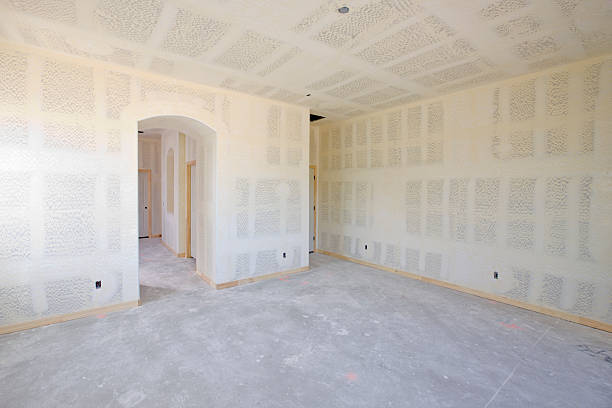
Made of crushed gypsum rock that is pressed between layers of special paper, drywall, which is also known as gypsum, wallboard or sheetrock, is a fire-resistant construction material. Contractors, who install or repair drywalls, are called drywall contractors and they offer their services to other building contractors, as well as residential and commercial contractors or owners for installing drywall materials. Drywall contractors are master craftsmen in their own field of specialty, which means that they have had extensive years of experience working in their craft and, in running the business, they may work independently or employ a crew of drywall installers and finishers.
An individual who desires to enter this trade must have the following requirements: a high school diploma or GED, physical strength, stamina, and endurance, since drywalling is a physically demanding job which involves frequent standing, bending, stretching, climbing on ladders, as well as lifting and moving heavy drywall sheets that weigh 50 to 100 pounds. There are two options to become a professional drywaller: one option is to enroll in a formal drywall apprenticeship program, for two to four years, that includes classroom instruction and paid, on the job training; the other option is to obtain a job as a drywall helper and informally learn the trade under the tutelage of an experienced drywaller.
To succeed in the drywall contracting business, one has to have sufficient small business skills and knowledge; therefore, one has need to enroll in small business courses, either in college or in a community center or take advantage of free online courses offered by the US Small Business Administration. To do business as a drywall contractor, he must secure the following: business license, liability insurance and workers’ compensation insurance. Securing a license as a drywaller, the requirements actually vary from each state, such that some states require a general contractor’s license; other states require for a specialty license; still other states may require a construction-related degree or a specified number of college credits to qualify for a license.
Short Course on Businesses – What You Should Know
A drywaller, as well as a drywall contractor has these primary job responsibilities: apply drywall to walls or ceilings; fasten drywall panels to the inside framework of a building; prepare panels for painting by taping or finishing joints; smooth out imperfections; work with ceiling tile installers to build walls; read blueprints and designs; measure, cut, fit, and fasten panels; prepare panels by sawing, drilling, or cutting holes in panels for electrical outlets, air conditioning units, and plumbing; screw panels to wood or metal framework; use a lift to place ceiling panels; fill joints in-between panels; press paper tape into compound; smooth away excess material; cover nail and screw depressions; apply second and third coats of compound; sand areas after each coat.The Beginner’s Guide to Contractors
